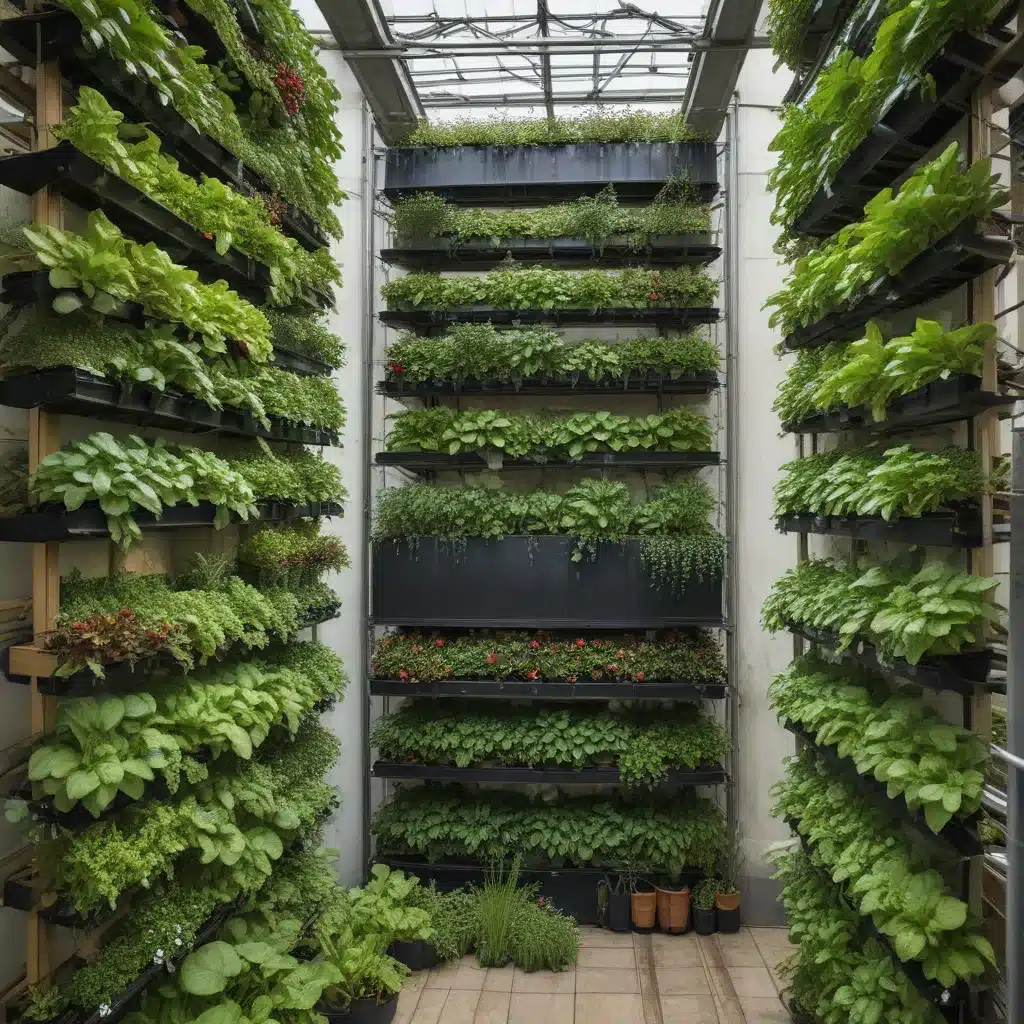
The Rise of Rooftop Agriculture: Transforming Cities into Oases of Food Security
In the face of rapid urbanization and dwindling agricultural land, a revolutionary concept has emerged that is reshaping the way we grow and access food in cities – rooftop agriculture. This innovative approach to urban farming is not only providing fresh, locally-sourced produce to city dwellers but also unlocking a host of environmental, social, and economic benefits.
The Benefits of Rooftop Farming
Reducing Urban Heat and Energy Costs: Rooftop gardens and greenhouses can act as natural insulation, helping to regulate building temperatures and reducing the energy required for heating and cooling. This, in turn, lowers greenhouse gas emissions and utility bills for building owners.
Improving Air Quality and Biodiversity: The presence of vegetation on rooftops can help filter air pollutants, absorb carbon dioxide, and provide vital habitats for urban wildlife, contributing to a healthier, more vibrant ecosystem.
Enhancing Food Security and Nutrition: By growing food where it is consumed, rooftop agriculture reduces the need for long-distance transportation and the associated environmental impacts. This can increase access to fresh, nutrient-dense produce, especially in underserved communities.
Fostering Social Cohesion and Education: Rooftop farms can serve as community gathering spaces, providing opportunities for skill-building, social interaction, and educational programs that connect urban residents with the origins of their food.
The Diverse Approaches to Rooftop Farming
Rooftop agriculture can take on various forms, each with its own unique advantages and considerations:
Rooftop Greenhouses
These protected structures allow for year-round cultivation, shielding crops from harsh weather conditions and enabling the production of a wider variety of plants. Rooftop greenhouses often incorporate cutting-edge technologies, such as hydroponics and aquaponics, to maximize efficiency and yields.
Open-Air Rooftop Farms
These outdoor gardens are typically more cost-effective to establish and maintain, relying on natural sunlight and precipitation. They may be better suited for growing hardy, low-maintenance crops, such as leafy greens, herbs, and certain vegetables.
Multifunctional Rooftop Farming
Some rooftop farms are integrated into the design of buildings, serving dual purposes – food production and other functions, such as recreation, education, or commercial activities. This approach can enhance the overall sustainability and community impact of urban agricultural initiatives.
Overcoming Challenges and Advancing Rooftop Farming
While the potential of rooftop agriculture is immense, there are practical considerations that must be addressed to ensure the success and long-term viability of these projects:
Structural Integrity and Safety
Rooftop farms can add significant weight to a building’s structure, requiring careful engineering assessments and reinforcements to maintain structural integrity. Additionally, safety measures, such as railings and emergency exits, must be implemented to protect both farmers and the public.
Soil and Water Management
Depending on the cultivation method, rooftop farms may require specialized soil or hydroponic systems, as well as efficient water management strategies to minimize resource usage and maximize productivity.
Pests and Disease Control
Urban environments can present unique pest and disease challenges, necessitating the adoption of integrated pest management techniques and the selection of disease-resistant plant varieties.
Policy and Regulatory Considerations
Navigating the complex web of zoning laws, building codes, and municipal regulations is crucial for the successful implementation and operation of rooftop farms. Engaging with local authorities and communities can help shape policies that support and incentivize urban agriculture.
Inspiring Examples of Rooftop Farming around the World
Across the globe, innovative rooftop agriculture projects are demonstrating the transformative potential of this approach:
The Firebird Research Farm, Washington, D.C.
Operated by the University of the District of Columbia’s Center for Urban Agriculture and Gardening Education, this urban farm showcases the use of hydroponic and aquaponic systems to grow a diverse array of vegetables in a small, controlled environment.
The Van Ness Urban Food Hub, Washington, D.C.
This 20,000-square-foot green roof on the University of the District of Columbia’s campus features a variety of food plants, a greenhouse, and a hydroponic system, all designed to maximize the use of limited urban space.
The East Capitol Urban Farm, Washington, D.C.
This three-acre urban farm, the largest of its kind in the city, is the result of a collaborative effort between the university, government agencies, and community organizations to improve food security and sustainability in a underserved neighborhood.
The Lamond-Riggs Urban Food Hub, Washington, D.C.
This multi-functional hub, built on an underutilized basketball court, features aquaponic and hydroponic systems, a native plant nursery, a demonstration kitchen, and community garden beds, serving as a hub for education, entrepreneurship, and food production.
The Future of Rooftop Farming: Innovation and Scalability
As the demand for sustainable, localized food systems continues to grow, the future of rooftop agriculture looks increasingly promising. Advancements in technology, such as AI-powered monitoring systems, automated irrigation, and precision farming techniques, will enable even greater efficiency and productivity.
Furthermore, the integration of rooftop farming into new and existing building designs, as well as the development of policies that incentivize urban agriculture, will be crucial in scaling up this transformative approach to food production. By embracing the opportunities presented by rooftop farming, cities around the world can become thriving, self-sustaining oases that nourish their residents and the environment.
To learn more about the latest developments and best practices in rooftop agriculture, be sure to visit Roofersinnorthampton.co.uk. Our team of seasoned roofing professionals is dedicated to providing practical insights and innovative solutions to help you navigate the dynamic world of urban farming and sustainable food production.

